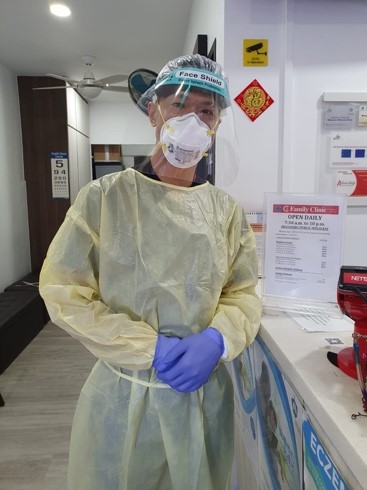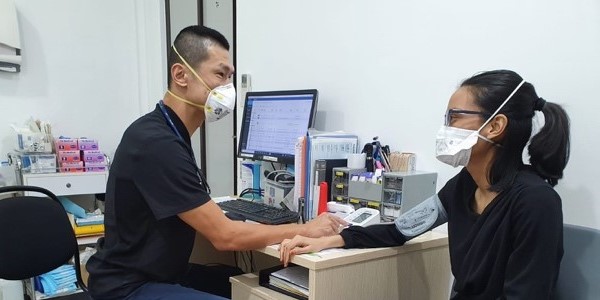By Dr James Cheong, Family Physician
 Dr James Cheong is a Family Physician practicing in a GP clinic situated in the heartlands of Aljunied Crescent. Just as he believes that primary care, along with community health partners, plays an important role in anchoring patient care in the community, he also advocates holistic patient-centred care through collaboration, coordination and communication between primary care, tertiary specialist care and patients.
Dr James Cheong is a Family Physician practicing in a GP clinic situated in the heartlands of Aljunied Crescent. Just as he believes that primary care, along with community health partners, plays an important role in anchoring patient care in the community, he also advocates holistic patient-centred care through collaboration, coordination and communication between primary care, tertiary specialist care and patients.
COVID-19 has brought on great challenges to Singaporeans’ lives and livelihood. Almost 18 months on, the war against COVID-19 is still waging, with healthcare and healthcare professionals right at the frontlines.
The scourge of the COVID-19 pandemic has brought on fresh challenges to providing care in the community. During the Circuit Breaker period in May 2020, patients were afraid to seek care physically at the clinic, for fear of contracting COVID-19 while out in the community. Many stayed away and there were concerns of a drop-off in care for patients with chronic illnesses. Due to social distancing measures and cross-institution restrictions, it was no longer easy for medical teams to meet and collaborate. This proved challenging for delivering care to patients with complex bio-psycho-social issues which required multi-disciplinary care.
GP clinics had to implement intensified infection control measures to ensure patients with fever and acute respiratory illness (ARI) were segregated from other patients to reduce the risk of spread. Clinics had to ramp up PPE and infection control supplies, and clinic staff had to be quickly trained and fitted with appropriate PPE. Public Health Preparedness Clinics (PHPCs), such as the one that I work in, were activated by MOH to support the national effort in combating COVID-19. Many PHPCs gamely took on the role of SASH clinics, which are to provide COVID-19 testing for Polymerase Chain Reaction (PCR) and recently, Antigen Rapid Testing (ART), to quickly detect cases in the community.
 Dr Cheong attending to a patient
Dr Cheong attending to a patient
All these brought on administrative, operational, logistical and infrastructural challenges to GP clinics, of which many are solo or small group GPs, operating small footprint healthcare establishments in the heartlands.
Our clinic, like many fellow GP clinics, evolved to meet the challenges brought on by the pandemic, with the support of MOH and AIC. We adopted telemedicine to extend our care beyond the physical confines of the clinic, and this helped to continue care for our patients with chronic diseases. To continue to collaborate with our healthcare partners in tertiary care and the community, we learnt to use video-conference tools to train and coordinate care.
Our clinic sharpened our triaging system to ensure patients with fever and ARI are segregated from other patients, and seen in a designated ‘fever’ area. This has led to greater awareness amongst patients and staff on good hygiene, proper PPE use and social distancing for infection control. Daily cleaning and disinfection procedures were reviewed and updated to commensurate with current infection controls concerns. All these measures have created a safer environment for patients and clinic staff.
To meet our role as a PHPC SASH clinic, our doctors upskilled to perform swab procedures for COVID-19 PCR testing and ART to detect and diagnose COVID-19. This has avoided the need to refer our patients with fever and ARI out to swab centres or other healthcare establishments to receive COVID-19 testing, allowing us to provide holistic and comprehensive care, while improving infection control.
As we continue to battle COVID-19, new challenges will continue to present themselves. Rather than seeing them as threat to our current routine, we can embrace them as opportunities for change to become better providers of care to our patients.
Find related items:
Issue 10: June 2021